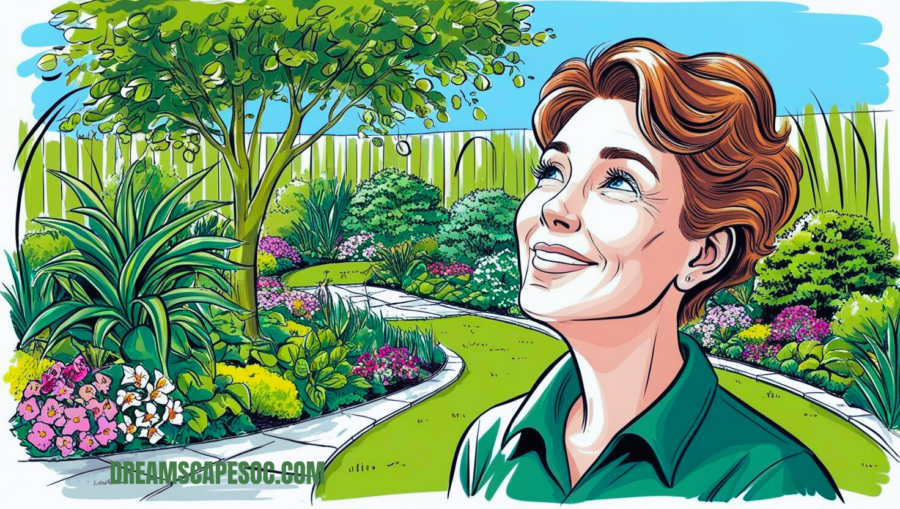No-Till Gardening: What Is Its Benefits?
No-till gardening avoids usual soil turning and digging. Rather, it depends on covering the ground with layers of organic debris, which creates an ideal environment for plant growth. This method creates an environment that naturally supports plant growth by maintaining the soil’s natural structure and avoiding the disturbance of beneficial organisms. In order to create a growing, low-maintenance garden, no-till gardening uses organic layers such as compost, mulch, and straw to help protect and nourish your garden beds. In no-till gardening, you’ll rely on organic layers like compost, mulch, and straw to nourish and protect your garden beds so your garden becomes a thriving, low-maintenance space.
Click here for instant access to Landscaping Design Ideas.
Why Choose No-Till Gardening?
- Healthier Soil Structure: When you leave the soil undisturbed, it maintains its natural structure, which is vital for plant health. Tilling can break down the soil’s natural composition, making it less supportive of plant roots. No-till gardening helps your plants grow strong by preserving that structure.
- Increases Biodiversity: The no-till method makes the soil favorable to beneficial bacteria, fungi, and earthworms. For you to maintain a healthy ecosystem in your garden, these organisms are necessary for soil aeration and nutrient recycling. You can boost plant health and manage pests by avoiding tilling and encouraging the growth of beneficial insects and microbes. By avoiding tilling and encouraging the growth of beneficial insects and microbes, you can boost plant health and manage pests.
- Cuts Down on Erosion and Compaction: When soil is left alone, it’s less likely to compact and erode. Compaction is a common issue with traditional gardening because tilling disturbs the natural structure of the soil, making it dense over time. No-till gardening leaves the soil loose, meaning plants have easier access to water and nutrients, and the soil is better protected from erosion caused by wind and rain.
Transform Your Outdoor Space Today – Download Your Free Landscaping and Gardening Checklist
How Does No-Till Gardening Work?
- Layering Organic Matter: No-till gardening relies on creating layers of organic material—often called “sheet mulching” or “lasagna gardening.” You’ll place layers of compost, straw, leaves, or other organic matter on top of the soil. These materials break down over time, providing a regular supply of nutrients to plants and benefiting the soil.
- Keeping Soil Structure Intact: One of the biggest perks of no-till gardening is avoiding the need to disturb the soil. Tilling not only compacts soil but also brings weed seeds to the surface, where they’re more likely to grow. By avoiding tilling, you allow the soil to keep its natural integrity and support healthy root development without disturbing the beneficial organisms that help plants thrive.
- Natural Fertilization and Weed Control: As the organic layers break down, they naturally fertilize the soil without the need for synthetic fertilizers. Mulch also acts as a weed barrier by blocking sunlight, which prevents weeds from sprouting. This results in a low-maintenance garden with fewer weeds and healthier soil.

Steps to Start a No-Till Garden
- Choose a Location: First, pick a spot for your garden. Look for an area that gets plenty of sunlight and has good drainage. Once you’ve got your location, instead of tilling, use cardboard or multiple layers of newspaper to cover the area to smother any grass or weeds.
- Add Organic Layers: After laying down your cardboard, it’s time to add your layers of organic material. Start with a nitrogen-rich layer like fresh compost to get things breaking down. On top of that, add bulkier material like straw, leaves, or shredded paper to keep moisture in and prevent the soil from compacting. Finally, top it off with a thick layer of mulch, like wood chips or aged compost, to protect the soil and help regulate its temperature.
- Planting in a No-Till Garden: When you’re ready to plant, create tiny holes in the mulch layer to place seeds or seedlings. If you’re direct-seeding, clear a narrow strip of mulch, plant the seeds, and lightly cover them with compost. Remember, the goal is minimal soil disturbance.
Maintaining a No-Till Garden: Tips for Ongoing Success
- Refresh Your Mulch Regularly: Mulch naturally breaks down and adds nutrients to the soil, so keeping it topped up is essential. Add fresh layers each season, especially after harvesting, to keep your garden soil healthy and weed-free.
- Rotate Your Crops: Switch up your plants each season to keep the soil balanced and help reduce the risk of pests. Rotating crops allows the soil to recover its nutrient profile and can prevent the buildup of soil-borne diseases.
- Try Cover Crops in the Off-Season: Cover crops like clover or rye are a no-till gardener’s secret weapon. Plant them off-season to protect the soil from erosion, add nitrogen, and improve soil structure. When planting your main crops, cut down the cover crop and add it as mulch.
- Natural Weed Management: In the early stages of no-till gardening, some weeds may still pop up. Keep on top of them by pulling or cutting them at the soil level instead of digging them out. The thick mulch layer helps, but a little manual effort will help keep your garden weed-free.
Handling Common No-Till Gardening Challenges
- Soil Compaction: For those with heavy clay soils, compaction may still be an issue, even with no-till methods. Adding more organic material over time will improve the structure. Also, planting deep-rooted crops like daikon radishes can help break up compacted soil without disturbing the ground.
- Pest Control Without Tilling: Without tilling, pests might need a different approach. Planting companion plants that attract natural predators like ladybugs can help manage pests. Organic pest solutions, such as neem oil, are also a safe bet if you need them.
- Handling Heavy Weed Growth in the Beginning: In the early stages, dormant weed seeds might germinate. Keep applying mulch to manage weeds effectively, and pull weeds as they arise. Over time, the soil will reach a balanced state, and weed growth will slow down.
| Aspect | No-Till Gardening |
| What | Skip tilling; layer compost, straw, and leaves. |
| Benefits | Healthier soil, less erosion, and fewer weeds boost biodiversity. |
| How to Start | Lay cardboard, add organic layers, mulch, then plant directly. |
| Maintenance | Add mulch, rotate crops, use cover crops, and manage weeds lightly. |
| Challenges | Initial weeds and clay compaction; use thick mulch and deep-rooted plants. |
To sum up, no-till gardening is an excellent way to create a healthy, sustainable garden. Adding layers of compost can help protect your soil, save water, and reduce the need for weed control and fertilizers. As a result, you may enjoy beautiful plants and delicious vegetables without having to do any maintenance because the garden basically takes care of itself. No matter how much or little gardening expertise you have, no-till gardening can help you create a sustainable garden that grows year after year. Regardless of your level of gardening skill, no-till gardening can help you create a sustainable garden that grows year after year. No-till gardening can assist you in creating a sustainable garden that develops year after year, no matter your level of gardening experience.
Key Takeaway: No-till gardening improves soil health, reduces water needs, and requires less maintenance. It’s a sustainable choice for anyone interested in organic gardening.
FAQs
Can I start a no-till garden over an existing lawn?
Absolutely! Just cover the lawn with a layer of cardboard or newspaper to smother the grass, then add your organic layers. Give it some time to break down, and you’ll be ready to plant.
How does crop rotation work in a no-till garden?
It’s easy—just change where you plant different types of crops each season. Crop rotation helps manage soil nutrients and reduces pest buildup, keeping your garden healthy.
Are cover crops necessary for no-till gardening?
Cover crops aren’t mandatory but are incredibly beneficial. They protect the soil in the off-season, prevent erosion, and enrich the soil with nutrients, making them a great addition to any no-till garden.
What type of mulch works best for no-till gardens?
Good options include compost, wood chips, straw, and shredded leaves. Different mulches break down at different rates, so mixing types can give balanced coverage and nutrient release.
Will no-till gardening work in small spaces?
Yes, it’s perfect for small spaces and works wonderfully in raised beds. No-till gardens are adaptable, making them a great choice even if you’re working with limited space.


